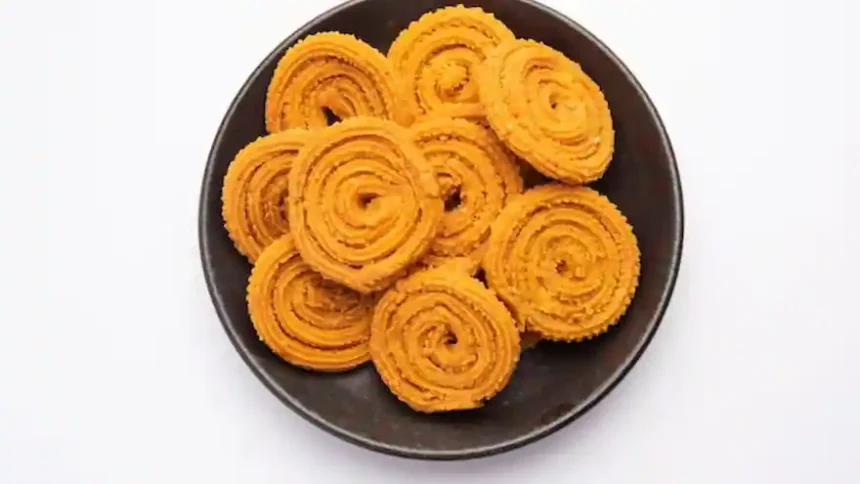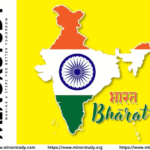🎆 Diwali 2025: Must-Try Traditional Snacks You Can Make At Home
Traditional Snacks: Diwali, often called the Festival of Lights, is not just about diyas and decorations—it’s a festival that celebrates light over darkness, knowledge over ignorance, and good over evil. But beyond its spiritual beauty, Diwali is also about family, togetherness, and delicious food, especially traditional snacks that bring generations together in the kitchen.
As Diwali 2025 approaches, it’s the perfect time to explore the must-try homemade traditional snacks that have flavored Indian homes for centuries. From crispy chaklis to melt-in-your-mouth laddoos, these treats not only satisfy the taste buds but also connect us to our roots.
- 🕯️ History of Diwali – The Festival That Lights Up Every Heart
- 🍪 Timeline of Diwali and Its Culinary Evolution
- 🍴 10 Irresistible Traditional Diwali Snacks You Must Try at Home (2025 Edition)
- 1. Chakli (Murukku) – The Crunchy Spiral of Joy
- 2. Mathri – The Perfect Tea-Time Delight
- 3. Namak Pare – Salty, Simple, and Addictive
- 4. Shakar Pare – Sweet Diamond Bites
- 5. Poha Chivda – The Healthier Snack Option
- 6. Murukku – South India’s Golden Snack
- 7. Besan Ladoo – Sweet Balls of Bliss
- 8. Karanji (Gujiya) – Sweet Pockets of Happiness
- 9. Sev – The Crispy Golden Strings
- 10. Murmura Ladoo (Puffed Rice Ladoo) – The Simplicity of Tradition
- 🎉 Significance of Traditional Snacks During Diwali
- 🌼 Observance and Celebration of Diwali
- 💫 Interesting Facts About Diwali and Its Snacks
- 💐 Wishing You a Heartwarming Diwali 2025
- 🌍 Importance of Diwali and Traditional Snacks in Our Life and Society
- 🪔 Frequently Asked Questions (FAQs)
- Q1. Why are traditional snacks important during Diwali?
- Q2. What are the healthiest Diwali snacks?
- Q3. Can I prepare these snacks in advance?
- Q4. How can I make my Diwali celebration more eco-friendly?
- Q5. What symbolizes prosperity during Diwali?
- 🌞 Conclusion: The Real Taste of Diwali Lies in Togetherness
Let’s embark on a flavorful journey through history, traditions, recipes, and the deeper meaning of Diwali and its timeless snacks.
🕯️ History of Diwali – The Festival That Lights Up Every Heart
The history of Diwali traces back over 2,500 years and has multiple origins across India’s diverse traditions:
In Hindu mythology, Diwali marks the return of Lord Rama, Sita, and Lakshmana to Ayodhya after a 14-year exile and victory over Ravana. The people of Ayodhya celebrated by lighting lamps—hence the “Festival of Lights.”
For Jains, it commemorates Lord Mahavira’s attainment of nirvana in 527 BCE.
Sikhs celebrate Bandi Chhor Divas, when Guru Hargobind Ji was freed from imprisonment.
In Bengal, it honors Goddess Kali, symbolizing power and the destruction of evil.
For business communities, Diwali also marks the new financial year, symbolizing prosperity.
Food, especially snacks and sweets, has always been integral to Diwali celebrations. In ancient times, households prepared handmade delicacies from scratch as an offering to the gods and to share with guests—spreading sweetness and goodwill.
🍪 Timeline of Diwali and Its Culinary Evolution
| Era | Key Highlights |
|---|---|
| Vedic Period (~1500 BCE) | Diwali evolved from harvest festivals; offerings were made to Goddess Lakshmi. |
| Epic Age (Ramayana Era) | Celebration of Lord Rama’s return; lamps and festive feasts became common. |
| Medieval Period | Regional variations in snacks and sweets emerged – from North India’s laddoos to South India’s murukku. |
| Colonial Era | Sugar, refined flour, and new cooking techniques influenced traditional recipes. |
| Modern India | Diwali became a global festival; traditional snacks are still made at home but also gifted and shared worldwide. |
🍴 10 Irresistible Traditional Diwali Snacks You Must Try at Home (2025 Edition)
Here’s a delicious list of traditional Diwali snacks you can easily prepare at home this year. Each one is rich in flavor, tradition, and nostalgia.
1. Chakli (Murukku) – The Crunchy Spiral of Joy
Origin: Maharashtra & South India
Ingredients: Rice flour, gram flour, sesame seeds, butter, and spices.
Taste: Crunchy, spicy, and aromatic.
🪔 Chakli symbolizes the eternal cycle of life and energy. Its spiral shape reminds us of unity and continuity.
2. Mathri – The Perfect Tea-Time Delight
Origin: Rajasthan & Uttar Pradesh
Ingredients: Refined flour, carom seeds, salt, and ghee.
Taste: Crispy, flaky, and slightly salty.
🪔 Mathri pairs beautifully with chai and chutney—making it a festive favorite for guests and family.
3. Namak Pare – Salty, Simple, and Addictive
Origin: North India
Ingredients: Flour, salt, cumin seeds, and ghee.
Taste: Mildly salty and savory.
🪔 These bite-sized delights symbolize simplicity and the joy of sharing.
4. Shakar Pare – Sweet Diamond Bites
Origin: Gujarat & Maharashtra
Ingredients: Wheat flour, sugar syrup, and ghee.
Taste: Crunchy and sweet.
🪔 Shakar Pare represents sweetness in life and the hope for prosperity.
5. Poha Chivda – The Healthier Snack Option
Origin: Western India
Ingredients: Flattened rice, peanuts, curry leaves, mustard seeds, and spices.
Taste: Light, crunchy, and spicy.
🪔 Chivda reflects balance—light yet flavorful—symbolizing harmony in life.
6. Murukku – South India’s Golden Snack
Origin: Tamil Nadu, Karnataka, and Kerala
Ingredients: Rice flour, urad dal flour, butter, sesame seeds, and cumin.
Taste: Crispy and savory.
🪔 Murukku is not just a snack but a symbol of unity in diversity, enjoyed across India with regional twists.
7. Besan Ladoo – Sweet Balls of Bliss
Origin: Pan-India
Ingredients: Gram flour, ghee, and sugar.
Taste: Rich, soft, and aromatic.
🪔 Ladoos symbolize prosperity, abundance, and the sweetness of good deeds.
8. Karanji (Gujiya) – Sweet Pockets of Happiness
Origin: Maharashtra, Uttar Pradesh, and Bihar
Ingredients: Flour, khoya, coconut, nuts, and sugar.
Taste: Crispy on the outside, sweet inside.
🪔 Karanji embodies the sweetness hidden within life’s outer struggles.
9. Sev – The Crispy Golden Strings
Origin: Central & Western India
Ingredients: Gram flour, turmeric, chili powder, and oil.
Taste: Spicy and crunchy.
🪔 Sev is a versatile snack—enjoyed alone or as a topping on chaats.
10. Murmura Ladoo (Puffed Rice Ladoo) – The Simplicity of Tradition
Origin: Bihar, West Bengal, and Odisha
Ingredients: Puffed rice and jaggery.
Taste: Light, crunchy, and naturally sweet.
🪔 Murmura ladoo signifies purity and community bonding, often shared during Diwali night.
🎉 Significance of Traditional Snacks During Diwali
Food plays a symbolic role in Diwali. Preparing traditional snacks at home is a ritual of love, sharing, and gratitude.
Offering to deities: Many households first offer sweets and snacks to Goddess Lakshmi for prosperity and peace.
Bonding: Families come together in kitchens, creating memories while rolling laddoos or frying chaklis.
Cultural preservation: Traditional recipes keep regional diversity alive.
Hospitality: Guests are welcomed with an assortment of homemade delights, showcasing Indian warmth.
Each recipe tells a story—of generations, festivals, and faith.
🌼 Observance and Celebration of Diwali
Diwali is celebrated for five days, each with unique rituals and foods:
| Day | Name & Significance | Common Snacks & Foods |
|---|---|---|
| Day 1 – Dhanteras | Worship of Goddess Lakshmi; buying gold & utensils. | Poha chivda, mathri |
| Day 2 – Naraka Chaturdashi (Choti Diwali) | Cleansing rituals & early morning oil bath. | Murukku, sev |
| Day 3 – Diwali (Main Day) | Lakshmi Puja, lighting diyas & feasting. | Karanji, laddoos, shakar pare |
| Day 4 – Govardhan Puja | Honoring Lord Krishna for protecting devotees. | Various homemade dishes |
| Day 5 – Bhai Dooj | Celebrating the bond between siblings. | Sweet and savory combinations |
During all these days, kitchens come alive with aroma, laughter, and celebration.
💫 Interesting Facts About Diwali and Its Snacks
Diwali sweets and snacks differ regionally:
In North India, people prefer laddoos and gujiyas, while South Indians enjoy murukku and adhirasam.Eco-friendly celebrations are rising:
Homemade snacks reduce packaging waste and encourage sustainable living.Family bonding tradition:
Preparing snacks together is an age-old custom symbolizing cooperation and unity.Healthy alternatives are trending:
Many households now bake traditional snacks or use air fryers for a modern twist.Global influence:
Indian diaspora continues these snack traditions in countries like the US, UK, and Australia.
💐 Wishing You a Heartwarming Diwali 2025
✨ “May the lights of Diwali illuminate your life with joy, and may the aroma of traditional snacks fill your home with warmth and love.” ✨
Here are some heartfelt Diwali 2025 wishes you can share:
“Wishing you a Delightful Diwali 2025 filled with light, laughter, and laddoos!”
“May your home sparkle with joy, and your plates overflow with delicious traditional treats.”
“This Diwali, may every bite remind you of family love and blessings.”
“Celebrate Diwali 2025 with sweetness, togetherness, and the timeless flavors of tradition.”
🌍 Importance of Diwali and Traditional Snacks in Our Life and Society
Strengthening family ties:
Cooking and sharing snacks together fosters unity and love.Encouraging self-sufficiency:
Homemade snacks represent the spirit of self-reliance and creativity.Cultural education:
Teaching younger generations how to make traditional recipes preserves heritage.Economic empowerment:
Many women-led small businesses thrive during Diwali by selling homemade treats.Social harmony:
Sharing food bridges cultural and religious gaps—spreading love universally.Mindful living:
Homemade snacks promote mindful eating and appreciation for simple joys.
🪔 Frequently Asked Questions (FAQs)
Q1. Why are traditional snacks important during Diwali?
They symbolize love, sharing, and prosperity. Making snacks at home keeps traditions alive and fosters family bonding.
Q2. What are the healthiest Diwali snacks?
Poha chivda, baked mathri, roasted sev, and murmura ladoo are light and nutritious options.
Q3. Can I prepare these snacks in advance?
Yes, most snacks like chakli, mathri, and shakar pare can be made a week before Diwali and stored in airtight containers.
Q4. How can I make my Diwali celebration more eco-friendly?
Make homemade snacks, use reusable diyas, and avoid plastic packaging.
Q5. What symbolizes prosperity during Diwali?
Goddess Lakshmi, diyas, and food offerings (prasad) all represent abundance and positivity.
🌞 Conclusion: The Real Taste of Diwali Lies in Togetherness
Diwali 2025 is not just another festival—it’s a celebration of emotion, tradition, and connection. When families gather to fry chaklis or roll ladoos, they don’t just make food—they create memories, love, and legacy.
Every snack has a story, every flavor has a feeling, and every recipe carries a blessing passed through generations.
So this Diwali, instead of buying everything ready-made, light your kitchen with joy—make at least one traditional snack at home. You’ll taste not just the recipe, but the spirit of Diwali itself.
✨ Happy Diwali 2025! ✨
May your festival be filled with light, laughter, and the taste of homemade happiness!







Hii
E2Bet adalah situs betting terbesar Se-Asia, menawarkan platform permainan yang
aman, terpercaya, dan inovatif, serta bonus menarik dan layanan pelanggan 24/7.
#E2Bet #E2BetIndonesia #Indonesia
Really when someone doesn’t know afterward its up
to other people that they will help, so here it happens.
Useful info. Fortunate me I discovered your website accidentally, and I’m surprised why this twist of fate didn’t took
place in advance! I bookmarked it.
Wow, this paragraph is fastidious, my younger sister is analyzing these kinds of things, thus
I am going to convey her.
**breathe**
breathe is a plant-powered tincture crafted to promote lung performance and enhance your breathing quality.
continuously i used to read smaller content which also clear their motive, and that is also happening
with this piece of writing which I am reading at this place.
It is not my first time to go to see this web page, i am browsing this
web page dailly and get pleasant information from here all the time.
I seriously love your site.. Great colors & theme. Did you make this website yourself?
Please reply back as I’m wanting to create my very own site and would like to find out where
you got this from or exactly what the theme is called.
Kudos!
Compliance automation consists of intelligent plan application, computerized audit trail generation, and comprehensive coverage capacities that make sure governing requirements are preserved throughout movement tasks while taking advantage of enhanced conformity functions available in target environments. Advanced protection combination often allows companies to boost their safety and security postures significantly past existing abilities while preserving operational performance, https://tiechnotes.blogspot.com/2025/11/next-generation-teams-migration-tool.html.
If you are going for most excellent contents like I do, just pay a quick visit this web site daily as it offers feature contents, thanks
Hmm is anyone else encountering problems with the pictures on this blog
loading? I’m trying to figure out if its a problem on my end or if it’s the blog.
Any feedback would be greatly appreciated.
Very interesting information!Perfect just what I was searching for! “Oh, I don’t blame Congress. If I had 600 billion at my disposal, I’d be irresponsible, too.” by Lichty and Wagner.
Diwali is definitely about the food as much as the lights! I found some interesting historical context on Diwali traditions at https://seed3d.ai that complements this article nicely.
Amazing! Its actually amazing piece of writing, I have got much clear idea
on the topic of from this article.
What’s up, after reading this amazing post i am as well delighted to share my familiarity here with friends.
Greetings from Colorado! I’m bored to tears at work so I decided to check out your blog on my iphone during lunch break.
I enjoy the info you present here and can’t wait to take a look
when I get home. I’m amazed at how fast your blog loaded on my mobile ..
I’m not even using WIFI, just 3G .. Anyhow, wonderful site!
Great blog here! Also your web site loads up very fast!
What web host are you using? Can I get your affiliate link to your
host? I wish my website loaded up as fast as yours lol
Yeah bookmaking this wasn’t a high risk determination great post! .
I¦ve recently started a web site, the information you provide on this website has helped me greatly. Thank you for all of your time & work.